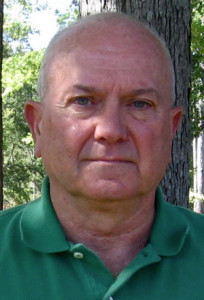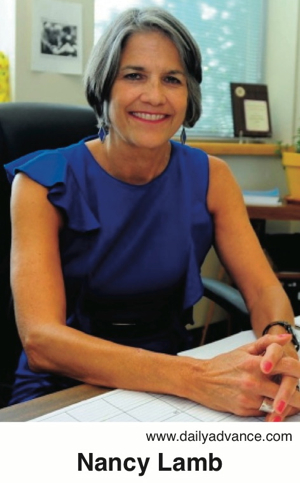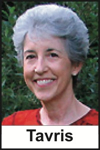Rascals case in brief
In the beginning, in 1989, more than 90 children at the Little Rascals Day Care Center in Edenton, North Carolina, accused a total of 20 adults with 429 instances of sexual abuse over a three-year period. It may have all begun with one parent’s complaint about punishment given her child.
Among the alleged perpetrators: the sheriff and mayor. But prosecutors would charge only Robin Byrum, Darlene Harris, Elizabeth “Betsy” Kelly, Robert “Bob” Kelly, Willard Scott Privott, Shelley Stone and Dawn Wilson – the Edenton 7.
Along with sodomy and beatings, allegations included a baby killed with a handgun, a child being hung upside down from a tree and being set on fire and countless other fantastic incidents involving spaceships, hot air balloons, pirate ships and trained sharks.
By the time prosecutors dropped the last charges in 1997, Little Rascals had become North Carolina’s longest and most costly criminal trial. Prosecutors kept defendants jailed in hopes at least one would turn against their supposed co-conspirators. Remarkably, none did. Another shameful record: Five defendants had to wait longer to face their accusers in court than anyone else in North Carolina history.
Between 1991 and 1997, Ofra Bikel produced three extraordinary episodes on the Little Rascals case for the PBS series “Frontline.” Although “Innocence Lost” did not deter prosecutors, it exposed their tactics and fostered nationwide skepticism and dismay.
With each passing year, the absurdity of the Little Rascals charges has become more obvious. But no admission of error has ever come from prosecutors, police, interviewers or parents. This site is devoted to the issues raised by this case.
On Facebook
Click for earlier Facebook posts archived on this site
Click to go to
Today’s random selection from the Little Rascals Day Care archives….
Click for earlier Facebook posts archived on this site
Click to go to
Today’s random selection from the Little Rascals Day Care archives….
Bob Kelly: ‘I had nothing to be ashamed of’
Oct. 11, 2011
In 1989 Bob Kelly was charged with 100 counts of child molestation.
In 1992 he was convicted and sentenced to 12 consecutive life sentences.

In 1995 his conviction was overturned and he was released from Central Prison.
“It was the best six years of my life,” he says of his time behind bars, “because it set me up for the rest of my life.”
When he walked out, Kelly was a man who had determined “never to feel ashamed, because I had nothing to be ashamed of.”
Today, remarried and retired at 63, he lives in a tidy suburban house just outside Sanford.
Perhaps the anger he still feels toward those who conspired to imprison him has been compartmentalized.
His attention goes to gardening (“500 pounds of tomatoes this year”), writing and visiting inmates, carving walking sticks out of old Christmas tree trunks, playing Sudoku, hitting golf balls and reading only those Westerns in which “the good guy always wins in the end.”
And he still cooks and cans the spaghetti sauce he once served every Friday at the Little Rascals Day Care Center.
“Freedom don’t ever get old,” he says.
‘Fear of closets’? Get that child to a therapist!
Oct. 22, 2012
In the Dark Ages of social science – the 1980s, give or take a few years — unfounded concepts were treated as received truth: satanic ritual abuse (later recast as sadistic ritual abuse), multiple personality disorder (later, dissociative identity disorder), repressed memory syndrome.
On what possible grounds did California clinical psychologist Catherine Gould determine that satanic ritual abuse was indicated by a child’s “Refusal to eat red or brown food” or “Fear of closets and small spaces” or “Preoccupation with cleanliness”? Did this crazy quilt of symptoms come to her in a hallucination.
Regardless, Gould’s list, widely photocopied, contributed to parental panics at day cares across the country. After all, she was “a licensed psychologist specializing in the diagnosis and treatment of adult and child victims of ritual abuse”!
So just how reliable an authority was Catherine Gould? Well, it was she who first claimed the Los Angeles County Ritual Abuse Task Force was being poisoned with diazinon.
Later, according to the Associated Press, “She said her blurred vision and failed memory weren’t psychosomatic, but she admitted she never visited a doctor to be tested for the pesticide.”
Refusal to eat red or brown food
Fear that food is poisoned
Bingeing, gorging, vomiting, anorexia
Problems Associated with Doctors
Fear of doctors
Fear of injections, blood tests
Fear of removing clothes
Toiletting/Bathroom Problems
Bathroom avoidance, toileting accidents
Preoccupation with cleanliness
Preoccupation with urine and feces
Ingestion of urine and feces
Family Problems
Fear of death of parents, siblings, pets
Separation anxiety
Avoidance of physical contact
Threatens or attacks parents, siblings
Sexual Problems
Age-inappropriate sexual knowledge
Fear of touch
Excessive masturbation
Sexually provocative behavior
Vaginal or anal pain
Relaxed anal sphincter,enlarged vaginal opening
Venereal disease
Emotional Problems
Rapid mood swings
Resistance to authority
Hyperactivity, poor attention span
Anxiety
Poor self-esteem
Withdrawal
Regression and babyish speech
Flat affect
Nightmares, night terrors
Learning disorders
Fear of closets and small spaces
Fear of being tied up, ties up others
Problems Associated with Colors
Fear of colors red and black
Preoccupation with color black
Problems Associated with Death
Fear of dying, preoccupation with death
Play and Peer Problems
Destroys toys
Death, mutilation, confinement themes in play
Inability to engage in fantasy play
Problems Associated with Supernatural
Fear of ghosts, monsters, witches, devils
Preoccupation with wands, spirits, magic potions, curses, crucifixes
Odd songs and chants
Preoccupation with occult symbols
Fear of attending church
Other Fears and Strange Beliefs
Imaginary friends
Fear of police, strangers, bad people
Fear of violent films
Fear of aggressive animals
Fear of cemeteries, mortuaries, churches
Fear of something foreign inside body, e.g. bomb, devil’s heart
Downloaded Oct. 22, 2012 from http://www.prism.gatech.edu/~kquach6/common.html
Focus on Lamb’s politics is off the mark
 Oct. 14, 2013
Oct. 14, 2013
“Whether Nancy Lamb should be promoted to district attorney is not simply a question of Democrats vs. Republicans. (Lamb is a Democrat; the decision on whether to appoint her to fill the rest of the late Frank Parrish’s term rests with Gov. Pat McCrory, a Republican.)
“A quarter-century ago, Lamb played a crucial role in the wrongful prosecution of the Edenton Seven, defendants in the Little Rascals Day Care case. Little Rascals was an especially notorious example of a wave of ‘satanic ritual abuse’ day-care prosecutions during the ’80s and early ’90s — virtually all of them based on hysteria and a misguided campaign to ‘Believe the Children.’ Today no respected social scientist believes these bizarre claims were anything more than a ‘moral panic.’
“Although she ranked below District Attorney H. P. Williams and Assistant Attorney General Bill Hart, it was Nancy Lamb who served not only as the prosecution’s closer in the courtroom, but also its public face. And it was Lamb who, after Williams dropped off the case, continued to cling to the discredited ‘ritual abuse’ fantasy and who vindictively conjured up an unrelated charge against Bob Kelly after his conviction had been resoundingly overturned by the North Carolina Court of Appeals.
“Little Rascals will remain a stain on the state of North Carolina until the Edenton Seven receive a statement of innocence such as that given the Duke lacrosse defendants. Neither the prosecutors nor their ill-trained therapists have ever expressed any regrets or made any amends. To even be considered for district attorney, Nancy Lamb should be willing to address her responsibility. If she still wants to argue that the defendants were guilty, let her do so.”
– From a letter I wrote last week to the Elizabeth City Daily Advance, the only daily newspaper in the seven-county First Prosecutorial District, taking issue with its editorial support of Nancy Lamb’s appointment as district attorney. Editorial is here; page PDF; text cache.
The 900-word editorial could come up with “only one possible explanation for McCrory’s reluctance to appoint her: partisan politics.” Unmentioned was Lamb’s responsibility in the district’s most infamous case – perhaps the Advance has forgotten? Or thinks she deserves to benefit from a prosecutorial statute of limitations?
My letter has yet to appear.
When skepticism is set aside for outrage
 July 13, 2012
July 13, 2012
“It is painful to admit this, but when the McMartin story first hit the news, the two of us, independently, were inclined to believe that the preschool teachers were guilty. Not knowing the details of the allegations, we mindlessly accepted the ‘where there’s smoke, there’s fire’ cliché; as scientists, we should have known better.
“When, months after the trial ended, the full story came out – about the emotionally disturbed mother who made the first accusation and whose charges became crazier and crazier until even the prosecution stopped paying attention to her; about how the children had been coerced over many months to ‘tell’ by zealous social workers on a moral crusade; about how the children’s stories became increasingly outlandish – we felt foolish and embarrassed that we had sacrificed our scientific skepticism on the altar of outrage.
“But our dissonance is nothing compared with that of the people who were personally involved in or who took a public stand, including the many psychotherapists, psychiatrists and social workers who consider themselves skilled clinicians and advocates for children’s rights.
– From “Mistakes Were Made (But Not by Me)” by Carol Tavris and Elliot Aronson (2007)
Of course, not everyone who “mindlessly accepted the ‘where there’s smoke, there’s fire’ cliché’ ” has recovered his misplaced scientific skepticism.











0 CommentsComment on Facebook